How Car Brakes Work
How Brakes Work
Your vehicles braking system consist of many different parts working together to help your car slow down, stop, and maneuver in a safe and controlled manner. All modern day cars use a brake booster, master cylinder and hydraulic fluid to help the driver brake easier without having to exert too much pressure on the pedal. There are two types of brake assembly commonly available – disc brakes and drum brakes.
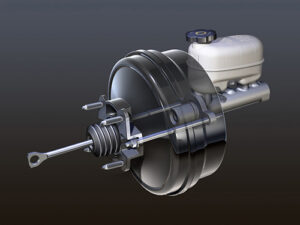
The major components of a disc braking system include , calipers, brake pads, a rotor disc, and brake hoses. Cars that don’t require disc brakes on all four wheels may come with drum brakes on the rear wheels. Drum brakes include a brake drum, wheels cylinder, brake shoes, an plate, an adjuster and actuator, brake hoses and return springs.
The brake pedal inside your vehicle is connected to the power brake booster and master cylinder. They are located within the engine compartment – mounted to the rear firewall. A brake booster makes it easier for the driver to brake by increasing the force exerted without the need for additional force applied on the foot pedal. The brake pedal also engages the master cylinder, which is filled with hydraulic fluid. When you push down the brake pedal, hydraulic pressure is created in the cylinder. The brake fluid is then pressurized along a series of pipes and hoses to the hydraulically activated pistons in each brake caliper. When the pistons are activated they press in on the two brake pads that are seated in the caliper, one on each side of the rotor. When the pads push in on the turning rotor friction is created causing the wheels to stop turning as fast. Hence making the vehicle slow down or come to a complete stop depending on how hard the brake pedal is applied. Over time and constant use of the brakes the pads wear down until they are no longer optimal for stopping the car. All the parts of the braking system are prone to failure over time.
Failure to service your cars brakes over time can lead to poor braking performance and slower response times while driving.
Check out this informative article for more information on when to service your cars brakes.
Types Of Brakes
Disc Brakes
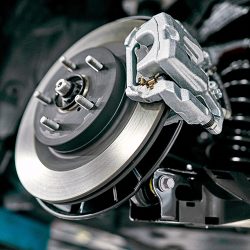
Hydraulic Disc brakes are attached to your cars wheels. They consist of a brake rotor, brake caliper and brake pads. When the brake pedal is pushed down, the brake master cylinder forces hydraulic fluid into the brake lines. The fluid goes straight to where the pistons are located in the brake caliper. In turn the brake pads are pushed up against the surface of the rotating brake rotor. The result of this contact creates friction that enables the vehicle to slow down or come to a complete stop
Drum Brakes
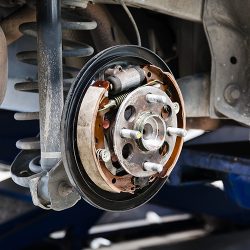
Drum brakes work using hydraulic brake fluid forced into the brake lines when you press on the brake pedal. This fluid pushes a pair of pistons out of the brake cylinder inside the brake drum. Then, the pistons push brake shoes, which are coated with a composite high friction material, outward against the drum. the drum is attached to the wheel. The friction created by this contact enables the vehicle to slow down or come to a complete stop. In modern cars drum brakes are mainly used on the rear wheels.
ABS Brakes
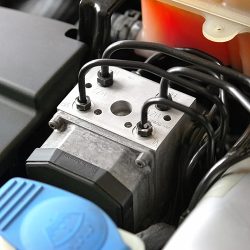
Anti-lock braking systems (ABS) work by applying and releasing the pressure to any wheel that decelerates too quickly. This allows maximum stopping force to be applied without the brakes locking-up and the car skidding. Your vehicle’s ABS system tests itself each time the ignition is turned on. If it detects a defect for whatever reason, the ABS turns itself off and the normal braking system works on its own. The ABS warning light will turn on in the dash letting the driver know there is a problem with the system. The majority of modern cars are fitted with ABS as a standard.
Park Brake
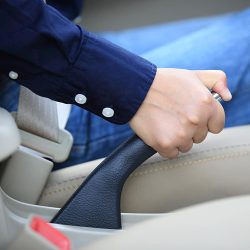
A parking brake is a mechanical hand lever or foot-operated brake. A parking brake controls the rear brakes and is a completely separate device from your vehicle’s regular hydraulic brakes. It is in charge of keeping a parked vehicle stationary. Parking brakes are mechanical and use cables and levers to operate. When a parking brake lever is pulled (or when a parking brake pedal is pushed), the steel cables are tightened. Tension in the cables keep your vehicle in place by compressing your rear brakes in a closed position.
Do you need help getting your vehicle ready for sale? Then check out a few of our helpful car selling tips
Take the hassle out of selling your car. Make it easy – Give us a call today, Los Angeles Cash for Cars
